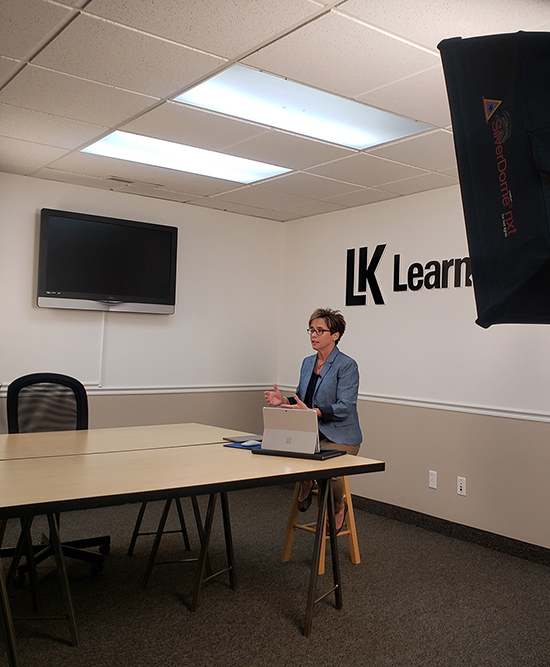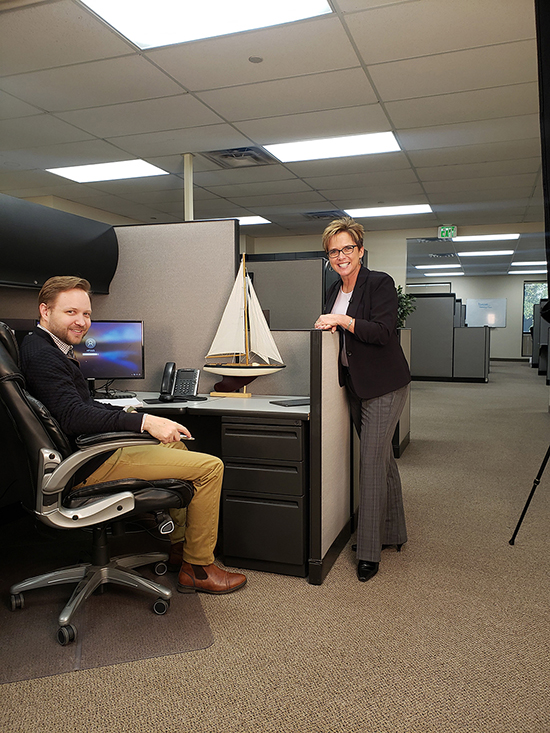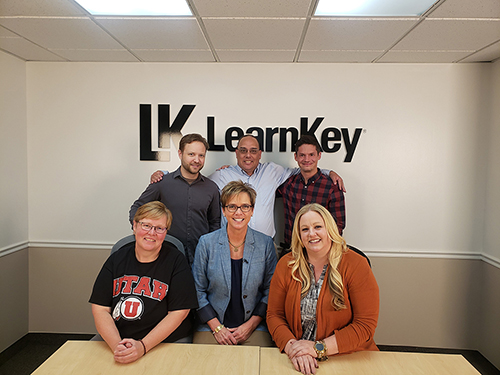
Tag: soft skills
How Important is Business Communication? Important Enough For a New Certification
About two months ago, I was having a conversation with our CEO and he said, “Brother (he calls me brother, how nice), wouldn’t it be nice if we could do a soft skills (meaning non-tech) course that could help improve communication skills for business? Is there a cert on that?”
At the time, the answer was yes, I could come up with a course but no, there was no official certification for this. But wouldn’t you know it: two weeks later, Certiport announced a new Communication Skills for Business (CSB) certification that will be out later this fall. Great minds think alike.
We, as you well know, are dedicated to improving employability every day. But that doesn’t just mean tech skills and being able to do a COUNTIFS function in Excel. Far from it. Strong employability requires strong communication skills, and this is where this course fits in to the overall employability umbrella.
Every so often we decide to change things up and bring in a guest author to do a course. For this course, we are very excited to have Jennifer Stubblefield, the reigning Certiport Educator of the Year, bring you this course. Jennifer has been a business teacher for over 25 years and is a champion Microsoft Office Master instructor as well. She understands both the tech side and the communication side of employment and it shows in this course.
We filmed the course last week and we are very excited to bring you this course. This course is like no other in that though the exam is heavily topic-based, our course is scenario-based and interactive while teaching to the core exam topics of
:
- Describe Basic Communication Principles
- Plan for Effective Communication
- Apply Best Practices for Creating Business Deliverables
- Deliver Your Message
- Receive Communications
- Analyze Communication Scenarios
This course applies to both those looking for jobs and those already in a career. I was going to say this course applies to those looking to improve communication skills, but let’s be real: everyone could use improvement in this area. And Jennifer covers this literally from head to toe (as in wardrobe for an interview – I knew a tie is supposed to come down to a belt buckle, but did you?). She also points out that whoever runs the front desk at a company is watching interview candidates from the moment they walk in and will divulge what is seen to the hiring decision-makers. A good reminder for all of us.
The truth is, we as a filming crew learned a lot even though improving our communication skills wasn’t on our minds when Jennifer arrived to film this course. For example, did you know there is a big difference in meaning between having a meeting in a L-shaped seating arrangement vs. sitting across from someone? I didn’t. Now, I do. I learned a lot about improving business communication skills just in the three days it took us to film this course. And I talk for a living. So, if I can learn a lot, so can you, no matter where you are on your career path
Personal Productivity Courses Released!
We’re pleased to announce that in partnership with Kantola Productions, we’ve released the following new personal productivity soft skills courses:
- Bullying and Respect in the Workplace
- Customer Service Counts
- Managing the Workplace Bully
- Professional Email Etiquette
- ART of Customer Service
- Dealing with the Irate Customer
- Leadership at Every Level
- Listening Under Pressure
- Social Media at Work
- The Drug-Free Workplace
- Wednesday’s Touch
- Workplace Ethics
Bullying and Respect in the Workplace
In five dramatic stories taking place in settings that range from a hospital to City Hall, victims and witnesses will see how to speak up and challenge a coworker’s mean-spirited behavior in a straightforward way that earns them respect. They’ll also learn they do not have to face this problem alone. If they are not comfortable challenging a bully on their own—or if they do speak up and the behavior continues—they can reach out to supervisors, HR or other designated resources to help resolve the issues.
As for any bullies who may be watching: this video clearly shows that mistreating a fellow employee makes you look bad in the eyes of others and will not be tolerated in your workplace.
Viewers will enjoy the amusing story of two coworkers who start their day experiencing bad customer service as customers themselves. Comparing notes, they enter a friendly competition to see who can offer the best customer service that day on the job. As they demonstrate sales skills and handle rushed (even unhappy) customers, their fun rivalry reminds employees that customers are people too. And it makes the point to employees that their peers are counting on them as well.
In fact, coworkers are also customers. Everyone has “internal customers” when helping other employees meet common goals. And every employee represents the organization when encountering outsiders, whether or not customer service is a major part of their job description.
Five realistic scenes in a range of workplaces show what to do when someone comes to you for help or if you notice repeated conflict among employees. You’ll learn how to step in right away and conduct effective conversations, calmly and professionally. You’ll see when it might be appropriate to reach out for help, especially in cases where discipline may be appropriate.
Use this program to learn how to stop bullying behavior and turn a dysfunctional environment into a healthy, productive and pleasant place to work.
In spite of texting and other informal means of communication, business correspondence still counts. And email is still the preferred method of contact for sharing information and resolving problems. The impression you leave with others about the quality of your organization and your own personal competency is largely based on the courtesy and professionalism of your email correspondence. Workplace etiquette matters!
No matter how long you’ve been using email, you’ll learn some very important guidelines in this email training video—guidelines that will improve communication, protect you from catastrophes, and ensure your messages are professional, every time.
Excellence in customer service boils down to three basic ideas: give customers the attention they want, the respect they deserve, and the time to answer their questions and take care of their needs. This newly revised customer service video uses humorous scenes mixed in with first-person responses to tell viewers what customers really want.
It seems so simple, yet today’s customers generally feel that service has gotten worse. Use this customer service video to bring the message home to your employees and make it stick: customer service is an ART.
Dealing with the Irate Customer
It’s hard to keep your cool when dealing with difficult or angry customers. After all, it’s only human to get defensive and fight back—or cave in and give them whatever they demand.
What you need instead is a plan.
The guidelines presented in this difficult customer video will help you calm angry customers. Once you bring them around, they’re more likely to work with you to find a resolution that solves their complaint yet is fair to your organization.
This leadership training video begins by demonstrating four successful management styles: direction, influence, collaboration, and delegation. It then explains how your setting and your subordinates determine which management style is most appropriate for your situation — and the need to adapt to changing circumstances.
Our dramatic scenes help you recognize leadership behaviors at all levels of an organization. You’ll learn how to exhibit leadership by making good decisions and keeping your own emotions under control. And you’ll learn the critical importance of personal integrity.
Leadership takes more than good management. And there’s no better time than right now for you to take it to the next level.
It’s easy to get sidetracked by coworkers, cell phones, other customers, and a hundred other things. Good listening skills are essential for meeting customer needs—and ensuring a positive experience with your organization.
In three entertaining and informative stories, you’ll learn the right and wrong ways to handle customer service challenges. You’ll learn how three specific listening skills can soothe upset customers; help you get the information you need to solve their problems; and keep your focus in spite of interruptions. Once you’ve mastered these crucial skills, great customer service will be second nature.
Social media is everywhere—including our workplaces. While it can serve useful business purposes, it can also open the door to hackers, circulate rumors and abusive comments, create public relations nightmares, and be a real drag on productivity.
In fact, many employees spend up to two hours every workday on non-business related websites—often not realizing how their multiple side-trips can consume their time and lead to other problems, as well. And it’s not just during the workday. After-hours posts can also have an impact if they violate policies or cause friction between coworkers.
Even if drug-free workplace training is not legally mandated in your business or industry, everyone benefits from raising employee awareness on the impact that drugs or alcohol can have on your workplace.
Performance and safety sink fast when employees abuse alcohol or drugs. Others may feel they have to take up the slack when their coworkers attempt to work under the influence—falling short of expectations and increasing the risk of accident or injury.
This brand new release features believable scenes in construction, manufacturing, hospitality, food service, and business. It raises your employees’ awareness of this widespread problem, shows the harm that can be done to themselves and others, and encourages them to get help if they or a coworker is affected by drug or alcohol abuse.
Skills can be taught, but the right attitude is even more meaningful. This video, inspired by author and professional speaker Byrd Baggett, tells a simple but moving story about the importance of one customer service rep in the eyes of her customer. It inspires viewers to see that customers are people, too — and to build relationships that keep customers coming back.
Ethics matter. It’s not just the big scandals you see in the news, but the small everyday decisions that add up, too. In fact, that’s where you need to draw the line—with the little things—before serious damage is done.
This award-winning employee ethics training video follows four realistic scenarios that demonstrate the importance of basic values such as respect for others, fairness, and honesty. And it teaches a three-part decision-making process that helps employees find their way to a solution even in complex situations where the right answer doesn’t come easily.
Employees all share the responsibility to act ethically and to speak up if they see coworkers behaving badly. Use this employee ethics training DVD or online video to raise awareness, provide a framework for ethical decision making, and help create a company that employees can be proud of.
Our hope is that through our courseware we may provide learners with the guidance, preparation, and skills they need to succeed. For more information and to learn about additional LearnKey products visit our website.
LearnKey Expands Character Building Soft Skills Courses!
We’re pleased to announce that in partnership with Human Relations Media, we’ve released the following new character building soft skills courses:
- Digital Smarts: Behaving Ethically Online
- Digital Smarts: Protecting Your Online Reputation and Safety
- Your Reputation: Enhancing It, Repairing It
- I Was Cyberbullied
Digital Smarts: Behaving Ethically Online
Cyber ethics and respect for others online are critical skills to acquire for today’s connected teens. The message of this teen-centered video is that all students have a responsibility to behave ethically online and to know how to react when others behave in inappropriate ways. Teen hosts discuss the ethics of issues such as distributing unflattering pictures or posts aimed at harming someone’s reputation and the importance of respecting the privacy of others. They emphasize the importance of respecting the safety of others and becoming an upstander rather than a bystander when witnessing abusive behavior online.
Digital Smarts: Protecting Your Online Reputation and Safety
Cyber reputation, security and safety have become important topics for students to understand and master. This engaging video program encourages students to think critically about the opportunities and risks provided by their many digital devices. Real-life dangers from predators, spammers and identity thieves are revealed through teen interviews and accounts from experts in cyber security and safety. Students learn why it is important to choose passwords that are hard to guess and why they should not share their passwords with others.
Students are challenged to think about ways that digital technology can be used to enhance or damage their reputations. Teens talk about how compromising photos and other postings online became part of their permanent digital footprint. The video provides specific advice about how to protect students’ privacy, security and online reputations.
Your Reputation: Enhancing It, Repairing It
For middle schoolers, fitting in, being popular, having friends, and getting along with teachers is all important. Whether they are aware of it or not, the opinions and perceptions of peers, parents and teachers all contribute to a young teen’s reputation—or the way others see them. Through the use of acted out vignettes, young viewers will understand the power of having a good reputation versus the pain of having a bad one. Program also gives pointers on how to repair a bad reputation which often takes a long time to achieve. Program includes a special section on one’s online reputation and some of the pitfalls of social networking.
I Was Cyberbullied
This program presents three real-life stories from kids who were targets of cyberbullying attacks and offers viewers practical suggestions for how to avoid being victimized by this new, rapidly-spreading type of bullying. Each story highlights important tips such as: only post the type of information online that you would be comfortable with others seeing; remember that once an email or photo is posted online, you can’t take it back; avoid responding to vicious texts or emails that might escalate a situation further; and know when to turn to a trusted adult for help. Renowned “bully coach” Joel Haber leads a discussion on how serious and damaging cyberbullying can be, and touches upon recent cases of children committing suicide after being cyberbullied. This timely program will strike a chord with all viewers—those who may have been victimized as well as those who may have thought that cyberbullying was “no big deal.”
Our hope is that through our courseware we may provide learners with the guidance, preparation, and skills they need to succeed. For more information and to learn about additional LearnKey products visit our website.


